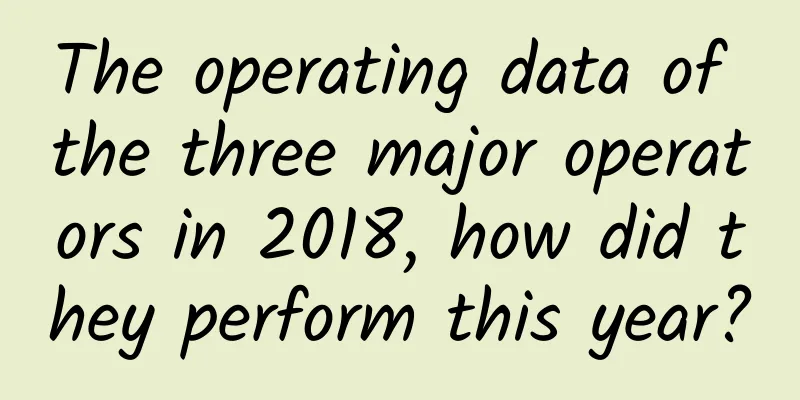3 minutes to let you practice the "great movement" of the seven-layer network model

|
We know that the direct connection between two computers is completed through the network, but the information transmission of the network relies on the seven-layer model (physical layer, data link layer, network layer, transport layer, session layer, presentation layer, application layer), which we call the OSI reference model. But what is the OSI model? The OSI model is used to solve the information exchange between an application software on one machine and an application software on another machine. Because computers communicate with each other, they are all hardware devices, so if you want to establish a connection, you must have software support. Therefore, the seven-layer model is the basis of communication. So, let's first introduce the first OSI model. Let's answer the above questions one by one. First of all, what is OSI? The English name is (Open System Interconnect) Open System Interconnection Model. It is a visual representation of the principle of computer communication. OSI model diagram Do you think it is difficult to remember? Next, I will teach you a simple method to remember what each layer does. From bottom to top: 1. Physical layer: Network communication requires hardware, and most hardware is related to physics, so it is recorded as the physical layer. The role of this hardware device here is to convert the information transmitted over the network into digital signals, that is, binary numbers, data streams of 0 and 1, which we call bit streams here. Therefore, the transmission unit of the physical layer is bit stream (byte). For example: I want to transmit information from computer A to computer B, first the information transmitted by the physical layer network is converted into a bit stream. 2. Data Link Layer Now that bit streams can be sent through physical devices, here called wires, I now also want to transmit bit streams in the form of wireless broadcasts. And I also need to ensure that the bit stream I transmit is correct or not, and it must have the function of error correction and verification. Therefore, the data link layer was born, which has the function of error correction and verification and ensures reliable data transmission. 3. Transport layer (exchange with network layer here) Now I can send the bit stream to another computer accurately, but when I send a large amount of data streams such as music and movies, I will find that the network will often be interrupted. Therefore, I have to encapsulate these data streams to ensure accuracy. Just like delivering takeout, pack each takeout. Deliver one by one, put labels on them to improve accuracy. When delivering one or two takeouts, I can still remember where to send them without labels, but when I have to deliver dozens or even hundreds of takeouts, I have to put labels on them. Therefore, the transport layer was invented first. How to transmit? The function of the transport layer is to encapsulate the data and put labels and addresses on it. At the transport layer, we need to focus on two important concepts: TCP and UDP: (1) TCP Transmission Control Protocol Features:
(2) UDP User Datagram Protocol Features:
4. Network Layer We said above that the transport layer encapsulates and packages the data stream, but now there is another problem. There are many computers. How can I accurately send the information to the computer I want to send it to? At this time, a router is needed to complete it, so the network layer was born. Because, in reality, many network locations are completed by routers. In the network layer, we apply the knowledge point of IP protocol. What do you understand about IP protocol? The IP protocol, also called IP datagram, or datagram for short. The so-called IP layer is responsible for sending data packets at a lower level to data packets at a higher level; in layman's terms, it sends the Ethernet device driver to the TCP/UDP layer, and vice versa, it can also send the protocol content of a higher layer to a lower layer. The IP address contained in the IP protocol contains the address of the computer that sends the information (source address) and the address of the computer that receives the information (destination address). The role of the IP protocol is that if computer A wants to send information from computer B, it can go through multiple paths such as H, G, K, or K, J, H, etc., and which one is the best path? This is the matter of the network layer, which invented the concept of IP packets and IP addresses. 5. Session layer Now we can package and encapsulate data packets and send them to the computer accurately. But there is a disadvantage. I have to use TCP to package them every time, and then use the IP protocol to find a suitable route to send them. But these are all done manually. Small amounts of data can be processed manually, but when encountering large amounts of data, you have to implement automatic packaging to process them. Wouldn't it be better if there is a method that can automatically package and address to send data streams? For this, the session layer was born. From this, we can see that the role of the session layer is to realize the functions of automatic packaging, packet sending (referring to IP packets), and automatic addressing. 6. Presentation Layer Now I can package the data packets and send them accurately to the computer I want to send them to, and this process can be completed automatically without manual completion. But now there is another problem. What if I want to send information from a Mac to a Windows user? Because they are two systems, many syntaxes and instructions are different and incompatible. For this reason, we let the presentation layer come into being. The presentation layer is to let us solve the process of smoothly sending information between systems. It is the translator between applications and networks. For example, when you check your bank card account on a mobile phone APP, when you enter your account number and password, it will be encrypted, and when the bank system receives your request, it needs to decrypt the code and then return the result to you. The presentation layer plays the role of encryption and decryption. 7. Application Layer The application layer is used to encapsulate various protocols, allowing users to use it better. An overview of the OSI seven-layer model protocol, mainly the following five types, the session layer and presentation layer are often classified into the application layer Explain how the seven-layer model works: For example, in the figure below, computer A wants to send information to computer B. The application in computer A first sends the information to be sent to the application layer. The application layer provides a network interface, and the information enters the Inten network and is then transmitted to the presentation layer, which is responsible for encrypting and decrypting the information and converting it into a unified language that the computer can recognize. The presentation layer then transmits the information to the fifth layer (session layer). The role of the session layer is to automatically package the transmitted information and find the address of the data stream itself. It synchronizes the data stream and updates it. Next, the information is sent to the fourth layer (transport layer). The role of the transport layer is to encapsulate the information one by one, label it, attach an address to it, and then pass it to the third layer network, encapsulating it into an overall IP packet, which contains the source site and destination address. The network layer then forwards the information to the second layer (data link layer). The role of the data link layer is to ensure that the information is converted into frames, to ensure sequential transmission and error detection and verification, and then the data link layer sends the information to the first layer (physical layer). The physical layer transmits the data stream to computer B through repeaters and communication equipment. The physical layer of computer B receives the information and passes it from the physical layer to the application layer from bottom to top, and then the information is passed to computer B. What are the characteristics of information flow exchange between two computers?
At this point, have you memorized the seven-layer network model? When all companies, organizations, and individuals comply with OSI specifications, our networks can be interconnected to form the Internet. We can communicate with each other. |
<<: Samsung, Qualcomm, Huawei, and Nokia, who are the world's top players in 5G technology?
>>: Witnessing the first step of 5G network construction: antenna and feeder integration
Recommend
Abandon 2.4GHz! This is the new Wi-Fi standard 802.11ax
In our daily router reviews or shopping guides, w...
5G industry enters a fast-forward period, and the three major operators have their own unique layouts
As the construction of 5G networks continues to a...
Cybersecurity risks of smart devices
Many people don’t consider the risks that smart d...
Hosteons: Ryzen7950x series VDS monthly payment starts from $7, 4GB/25GB/15TB@10Gbps/Los Angeles & Dallas & Salt Lake City data centers
Hosteons launched the VDS (Hybrid Servers) series...
The three major operators announced rectification: to solve the problem of too many packages and different rights for new and old packages
Recently, the three major domestic operators, Chi...
Is your phone stolen within minutes after you lose it? Teach you how to set the SIM card password
The Ministry of Industry and Information Technolo...
Deepin Technology participated in the national highway video networking work research meeting
On November 28, 2019, in order to accelerate the ...
An article to introduce you to network protocols
Author | Cai Zhuliang 1. Directory Network Protoc...
5G: A new vision for industrial automation
The next generation of wireless connectivity, 5G,...
Simplifying enterprise operations and maintenance: the right network automation strategy is key
[51CTO.com original article] From the development...
Wi-Fi vs. Ethernet: Which should you use and why?
Not long ago, you had to choose between a wired o...
AlphaVPS: €3.5/month-2GB/15G SSD/1TB/5 data centers including Los Angeles and New York
AlphaVPS is a Bulgarian hosting company, founded ...
Baidu responds to real-name registration: Implementation in accordance with regulations will not affect search
Recently, Baidu Netdisk released an announcement,...
RAKsmart's year-end discount upgrade, G-port unlimited servers reduced to $99 per month, San Jose servers sold at $30 per month
A few days ago, RAKsmart released a notice of yea...
Network packet loss troubleshooting solution
1. Location and processing of network packet loss...









